Share via:
Craving something tasty but also good for your body? Finding the right balance between flavor and nutrition can be tough, especially when you need snacks that keep you full and support digestion.
Many people struggle with low fiber diets, leading to issues like sluggish energy or even constipation. That’s where smart snacking comes in.
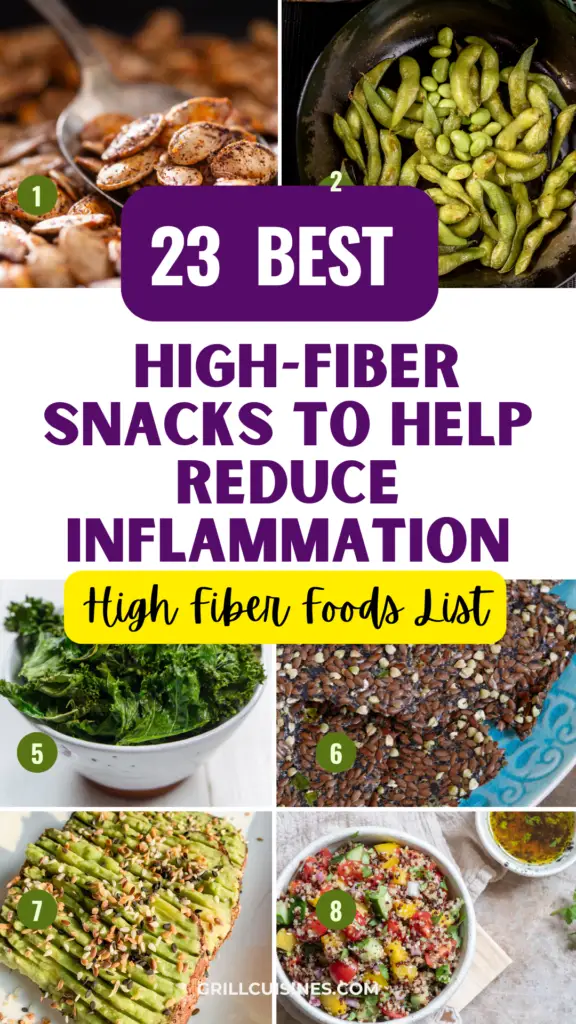
In this guide, you’ll discover 23 healthy high fiber snacks that fit into every lifestyle.
From kid-friendly bites and toddler options to easy recipes for busy parents, these ideas prove that nutritious doesn’t have to be boring.
You’ll also find high fiber snacks for pregnancy, postpartum recovery, and even specific needs like diabetes management.
Whether you want something simple at home, portable for on the go, or targeted for better digestion, there’s a choice here for you.
Get ready to explore high fiber snacks for kids, easy recipes to try at home, and nourishing ideas for any stage of life.
These options are quick, satisfying, and packed with wholesome ingredients—perfect for keeping your family healthy and happy.
23 Healthy High Fiber Snacks on the Go, for kids, constipation, Toddlers, Pregnancy, Postpartum, and Diabetes
1) Chia Pudding
Chia pudding is one of my favorite high-fiber snacks. These tiny seeds pack a powerful punch when it comes to digestive health.
I love how easy chia pudding is to make. Simply mix chia seeds with your choice of liquid – I prefer almond milk – and let it sit overnight in the fridge. The seeds absorb the liquid and form a gel-like consistency.
Just two tablespoons of chia seeds provide about 7 grams of fiber, which is a significant portion of the daily recommended intake.
The soluble fiber in chia seeds helps soften stools and promotes regular bowel movements. It also feeds beneficial gut bacteria, supporting overall digestive health.
I often add fresh fruits, nuts, or a drizzle of honey to my chia pudding for extra flavor and nutrients.
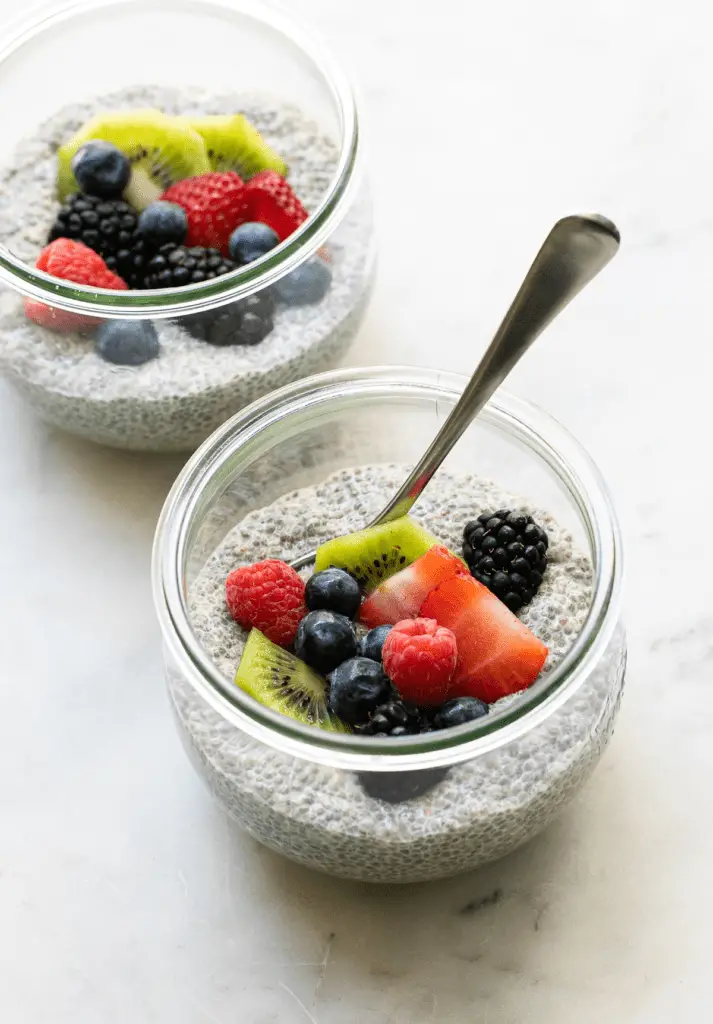
2) Raw Almonds
Raw almonds are an excellent high-fiber snack for promoting digestive health. I find them to be a convenient and nutritious option that’s easy to carry and enjoy on the go.
A one-ounce serving of raw almonds (about 23 nuts) provides approximately 3.5 grams of fiber. This fiber content helps add bulk to stools and promotes regular bowel movements.
In addition to fiber, almonds are rich in healthy fats and protein. These nutrients contribute to feelings of fullness and satisfaction, making them a great snack choice for managing appetite.
I appreciate that almonds are also a good source of magnesium, which can have a natural laxative effect. This mineral helps relax the muscles in the digestive tract, potentially easing constipation.
For those concerned about calories, it’s worth noting that a small handful of almonds goes a long way. Their nutrient density means you can enjoy their benefits without overindulging.
I recommend incorporating raw almonds into your diet as a standalone snack or adding them to yogurt, salads, or trail mix for added crunch and fiber.
3) Oat Bran Muffins
Oat bran muffins are a delicious and nutritious snack that can help with constipation relief. I find these muffins to be an excellent source of dietary fiber, which is crucial for maintaining healthy bowel function.
A medium-sized oat bran muffin contains about 5 grams of fiber. This significant amount can contribute to reaching the daily recommended fiber intake, promoting regularity and softening stools.
Oat bran is particularly rich in soluble fiber, which absorbs water in the digestive tract. This creates a gel-like substance that helps move waste through the intestines more easily.
I’ve noticed that oat bran muffins can be quite filling due to their fiber content. This makes them a satisfying snack that can help control hunger between meals.
When baking oat bran muffins at home, I like to add other fiber-rich ingredients like fruits or nuts. This further increases their fiber content and nutritional value.
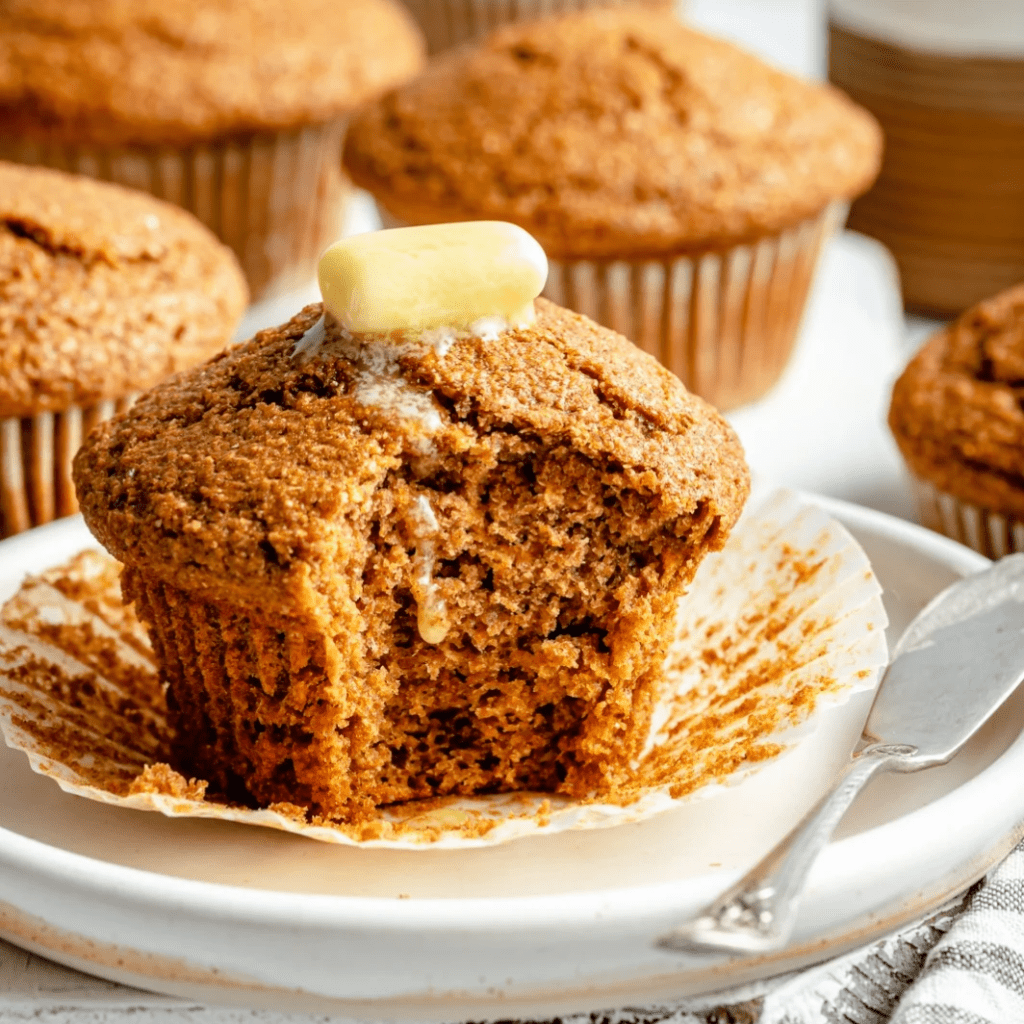
4) Baked Apple with Cinnamon
Apples are naturally rich in both soluble and insoluble fiber, making them excellent for promoting regular bowel movements.
When baked, apples become soft and easy to digest. The addition of cinnamon not only enhances the flavor but may also help stimulate digestion.
To prepare this snack, I core an apple and fill it with a mixture of oats, cinnamon, and a touch of honey. Then I bake it until it’s tender and aromatic.
The combination of the apple’s pectin and the added oats provides a fiber boost. One medium-sized baked apple can offer around 4-5 grams of fiber.
I find this snack particularly soothing during colder months. It’s a warm, satisfying treat that supports digestive health while satisfying my sweet tooth.
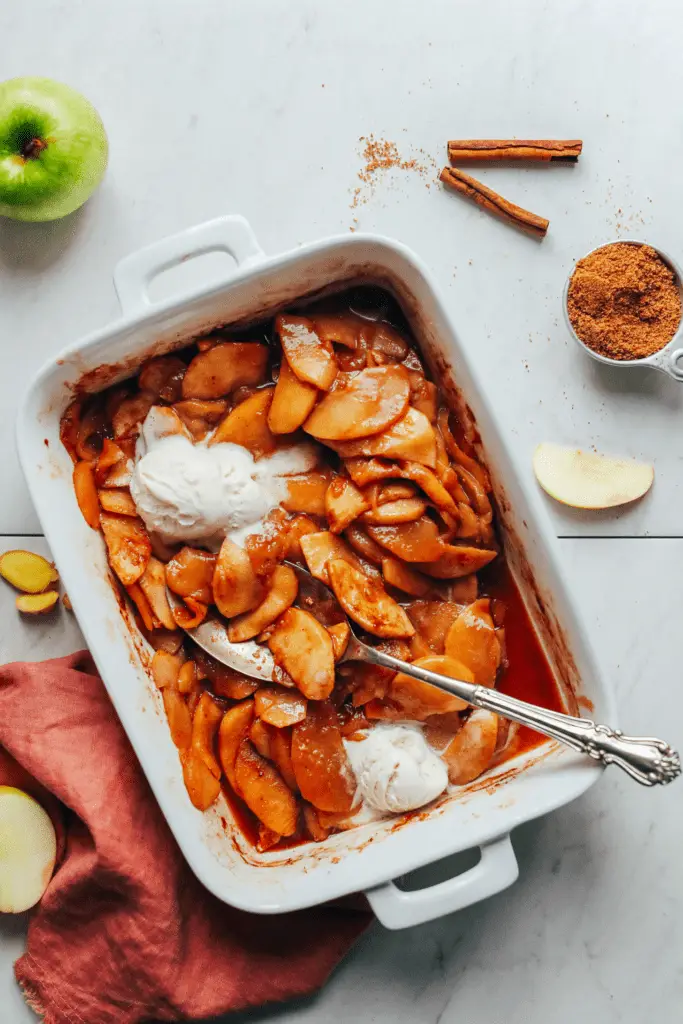
5) Flaxseed Crackers
Flaxseed crackers are a fantastic high-fiber snack option. I find them particularly effective for relieving constipation due to their impressive fiber content.
These crackers are typically made with whole flaxseeds and ground flax meal. The combination provides a hefty dose of both soluble and insoluble fiber, which aids digestion and promotes regular bowel movements.
I love how simple flaxseed crackers are to make at home. A basic recipe often includes just flaxseeds, water, and seasoning. The seeds absorb the water, creating a gel-like consistency that binds the crackers together.
For added flavor and nutritional benefits, I sometimes incorporate herbs, spices, or other seeds like chia or sesame. These additions can boost both taste and fiber content.
Store-bought versions are also available, but I prefer homemade for better control over ingredients and freshness. When baked, these crackers develop a satisfying crunch that pairs well with various toppings.
I enjoy spreading hummus or guacamole on my flaxseed crackers for an extra fiber boost. Nut butters or bean dips also make delicious, fiber-rich toppings.

6) Carrot Sticks with Hummus
Carrot sticks with hummus make an excellent high-fiber snack for constipation relief. I find this combination both delicious and nutritious.
Carrots are naturally rich in fiber, providing a satisfying crunch while promoting digestive health. They’re easy to prepare by simply peeling and cutting into thin strips.
Hummus, made from chickpeas, adds even more fiber to this snack. It also contributes protein and healthy fats, making it more filling and nutritionally balanced.
I love how versatile this snack is. The smooth, creamy texture of hummus perfectly complements the crisp carrot sticks. It’s a great alternative to chips and dip.
For added variety, I sometimes use other vegetables like celery or bell peppers alongside the carrots. This increases the fiber content and adds different flavors and textures.
This snack is convenient and portable, making it ideal for on-the-go eating. I often pack it for work or as a quick pre-workout boost.
Remember to stay hydrated when increasing fiber intake. Water helps fiber do its job effectively in the digestive system.

7) Popcorn
Popcorn is a delicious and nutritious high-fiber snack that can help relieve constipation. As a whole grain, it provides a good amount of insoluble fiber, which adds bulk to stool and promotes regular bowel movements.
I recommend air-popped popcorn as the healthiest option. It’s low in calories and free from added fats or oils. A 3-cup serving contains about 3.5 grams of fiber, making it an excellent choice for increasing fiber intake.
For added flavor, I suggest sprinkling popcorn with herbs or a small amount of olive oil and sea salt. This keeps it healthy while enhancing taste. Avoid excessive butter or cheese toppings, as these can add unnecessary fat and calories.
When eating popcorn for constipation relief, it’s crucial to drink plenty of water. The fiber in popcorn works best when accompanied by adequate hydration. This combination helps soften stool and ease its passage through the digestive system.
8) Lentil Soup
Lentil soup is a powerhouse of fiber and nutrition. I find it to be an excellent choice for those seeking constipation relief. A single cup of cooked lentils contains about 16 grams of fiber, making it a top contender for digestive health.
This soup is not only high in fiber but also rich in other nutrients that support colon health. I appreciate its versatility – it can be prepared in large batches and enjoyed throughout the week.
Adding vegetables to lentil soup further increases its fiber content. I often include carrots, celery, and spinach for added nutritional benefits and texture.
Lentils cook quickly compared to other legumes, making this soup a convenient option. I recommend preparing a big batch on Sunday to have ready-to-eat portions for the week ahead.
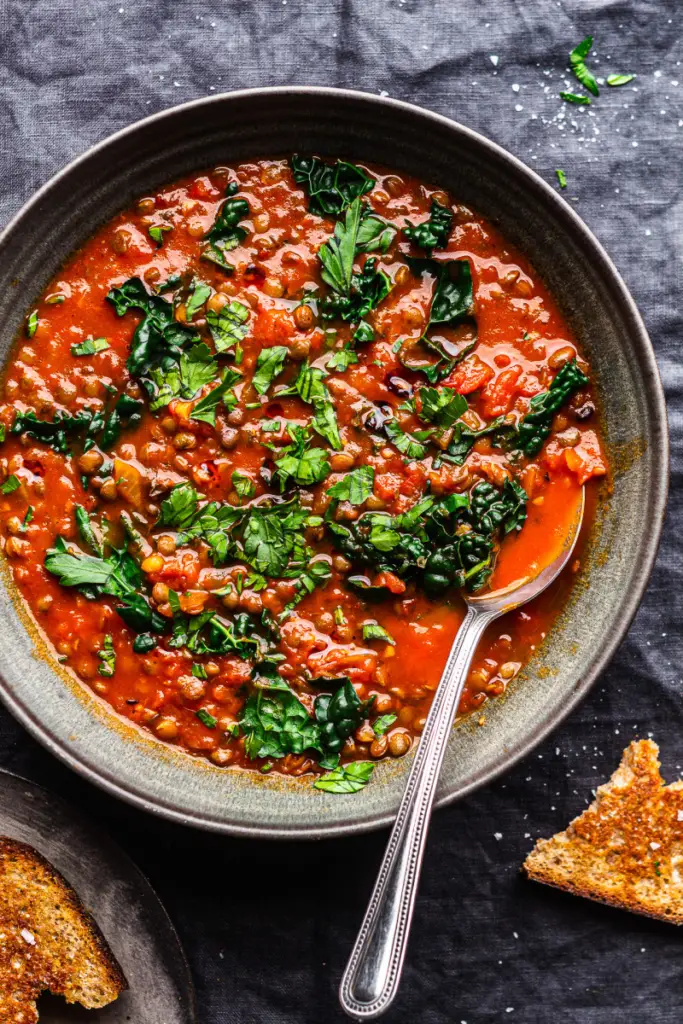
9) Kale Chips
Kale chips are one of my favorite high-fiber snacks. They’re crispy, light, and packed with nutrients. I love how easy they are to make at home too.
To prepare kale chips, I start by washing and thoroughly drying kale leaves. Then I remove the tough stems and tear the leaves into bite-sized pieces. A light coating of olive oil helps the seasonings stick.
I like to keep it simple with a sprinkle of sea salt, but garlic powder or nutritional yeast work well too. Baking at a low temperature of around 275°F (135°C) for 20-30 minutes yields perfectly crisp chips.
Kale is rich in fiber, which aids digestion and promotes regular bowel movements. It’s also loaded with vitamins and minerals. Just one cup of raw kale provides about 2 grams of fiber.
These chips make for a satisfying, guilt-free snack. They’re much healthier than typical potato chips or crackers. I find them especially helpful when I need a fiber boost.
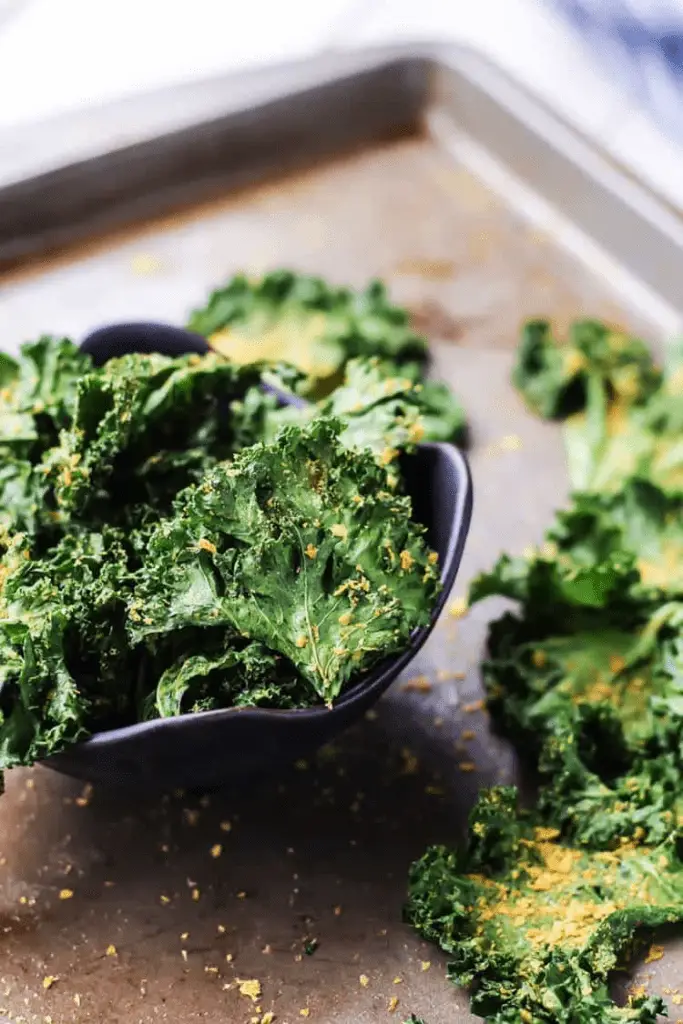
10) Greek Yogurt with Berries
Greek yogurt with berries is a delicious and nutritious snack. I recommend combining 1 cup of Greek yogurt with 1/2 cup of mixed berries for a fiber-rich treat.
Greek yogurt itself doesn’t contain fiber, but it’s an excellent source of protein and probiotics. These beneficial bacteria support digestive health and can help improve bowel regularity.
The real fiber boost comes from the berries. A half-cup serving of mixed berries provides about 4 grams of fiber. Berries are also packed with antioxidants and vitamins, making them a nutrient-dense addition to your snack.
To increase the fiber content even further, I suggest adding 1 tablespoon of ground flaxseeds. This simple addition contributes an extra 2.8 grams of fiber, bringing the total fiber content to around 6.8 grams.

11) Pears
Pears are an excellent high-fiber snack. I find them particularly refreshing and easy to incorporate into my diet. A medium-sized pear contains about 5.5 grams of fiber, which is roughly 20% of the daily recommended intake.
I appreciate that pears are versatile and can be enjoyed in various ways. I often eat them raw as a quick snack, but they’re also delicious sliced and added to salads or oatmeal. Their natural sweetness makes them a satisfying treat without added sugars.
The fiber in pears is a mix of soluble and insoluble types. This combination helps promote regular bowel movements and supports overall digestive health. I’ve noticed that eating pears regularly can contribute to a smoother digestive process.
It’s important to eat pears with the skin on to maximize fiber intake. The skin contains a significant portion of the fruit’s fiber content.
12) Quinoa Salad
Quinoa salad is one of my go-to high-fiber snacks for constipation relief. This versatile grain is packed with fiber, providing about 5.2 grams per cup when cooked.
I like to prepare a simple quinoa salad by mixing cooked and cooled quinoa with diced cucumber, cherry tomatoes, and bell peppers. These veggies add extra fiber and refreshing crunch.
For protein and healthy fats, I toss in some chickpeas and a sprinkle of pumpkin seeds. A light dressing of lemon juice and olive oil ties the flavors together nicely.
This fiber-rich snack not only helps with constipation but also keeps me feeling full between meals. I find it’s easy to make ahead and portion out for convenient snacking throughout the week.
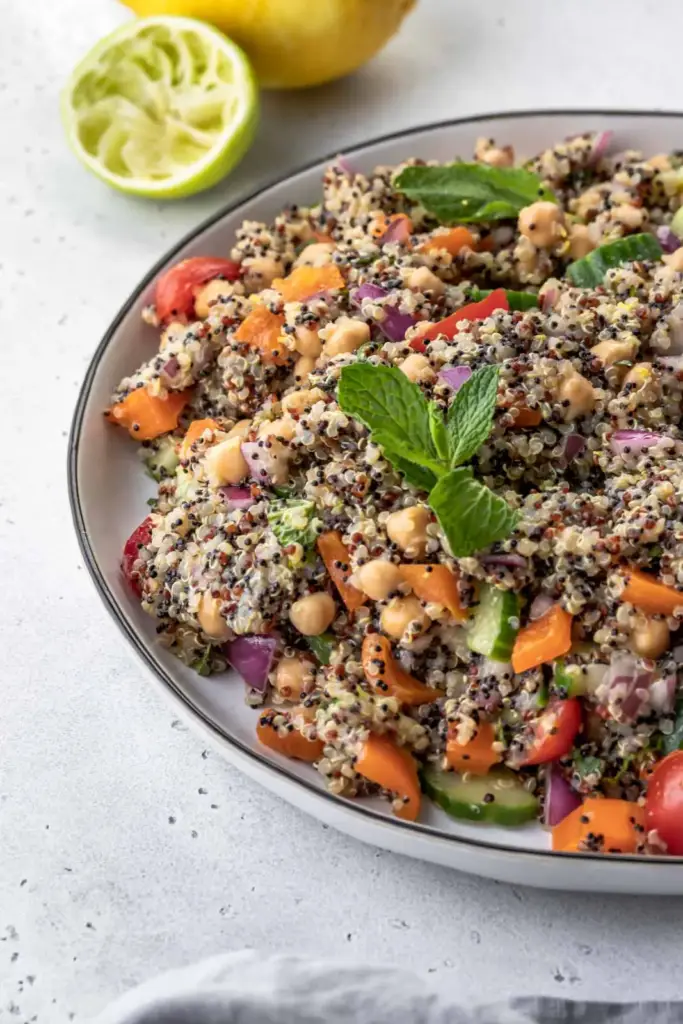
13) Prune Juice
Prune juice is a powerful ally in the fight against constipation. I’ve found it to be one of the most effective natural remedies for promoting regular bowel movements.
This dark purple juice is rich in fiber, particularly soluble fiber, which helps soften stool and make it easier to pass. It also contains sorbitol, a natural laxative that draws water into the intestines.
I recommend drinking 4-8 ounces of prune juice daily to help relieve constipation. It’s best consumed on an empty stomach, preferably in the morning.
For those who find the taste too strong, I suggest diluting it with water or mixing it with other juices. Apple or pear juice can complement prune juice nicely.
Studies have shown that prune juice can start improving constipation symptoms in as little as three weeks of daily consumption. It’s a safe, natural option for most people.
However, I advise starting with small amounts and gradually increasing intake to avoid potential digestive discomfort. As with any dietary change, it’s wise to consult a healthcare provider first, especially for those with chronic conditions.
14) Avocado Toast
Avocado toast is one of my favorite high-fiber snacks. I love how simple yet nutritious it is. The combination of whole grain bread and creamy avocado provides a good dose of fiber to support digestive health.
To make avocado toast, I start with a slice of whole wheat bread as the base. Whole grain breads offer more fiber than their refined counterparts. I then mash about 1/4 of a ripe avocado and spread it on top.
For extra fiber, I sometimes add white beans to my avocado toast. The beans boost the protein and fiber content even further. A drizzle of olive oil adds healthy fats and enhances absorption of fat-soluble vitamins.
I like to season my avocado toast with a pinch of salt, pepper, and red pepper flakes for flavor. The combination of complex carbs, healthy fats, and fiber makes this a satisfying and gut-friendly snack. It’s quick to prepare and keeps me feeling full.

15) Whole Grain Cereal
Whole grain cereals are an excellent high-fiber snack option for constipation relief. I recommend choosing cereals with at least 5 grams of fiber per serving for the most benefit.
Oat-based cereals like steel-cut oats or oat bran are particularly effective. They contain beta-glucan, a soluble fiber that can help soften stools and make them easier to pass.
Barley-based cereals are another great choice. Like oats, barley is rich in beta-glucan fiber. It can help hydrate and soften stools, easing constipation.
When selecting a whole grain cereal, I suggest checking the ingredients list. The first ingredient should be a whole grain like whole wheat or oats, not refined grains or added sugars.
For added nutrition and fiber, I like to top my cereal with fresh berries, sliced almonds, or chia seeds. This boosts the overall fiber content and adds variety to the snack.
A bowl of whole grain cereal with milk makes for a satisfying and gut-friendly snack any time of day. It’s an easy way to increase fiber intake and promote digestive regularity.
16) Edamame
Edamame is a fantastic high-fiber snack that can help with constipation relief. I love these young soybeans for their versatility and nutritional benefits.
A cup of edamame provides about 8 grams of fiber, which is significant for such a small serving. This fiber content helps promote regular bowel movements and eases constipation.
I find edamame to be incredibly easy to prepare. They can be steamed, boiled, or microwaved in minutes. I often sprinkle them with a bit of sea salt for added flavor.
Edamame is not only high in fiber but also rich in protein, making it a satisfying snack. This combination helps me feel full and supports digestive health.
I enjoy edamame as a standalone snack or as part of a larger meal. They’re great in salads, stir-fries, or even pureed into a dip.
For those watching their sodium intake, I recommend choosing unsalted edamame and adding seasonings at home. This way, I can control the amount of salt I consume.
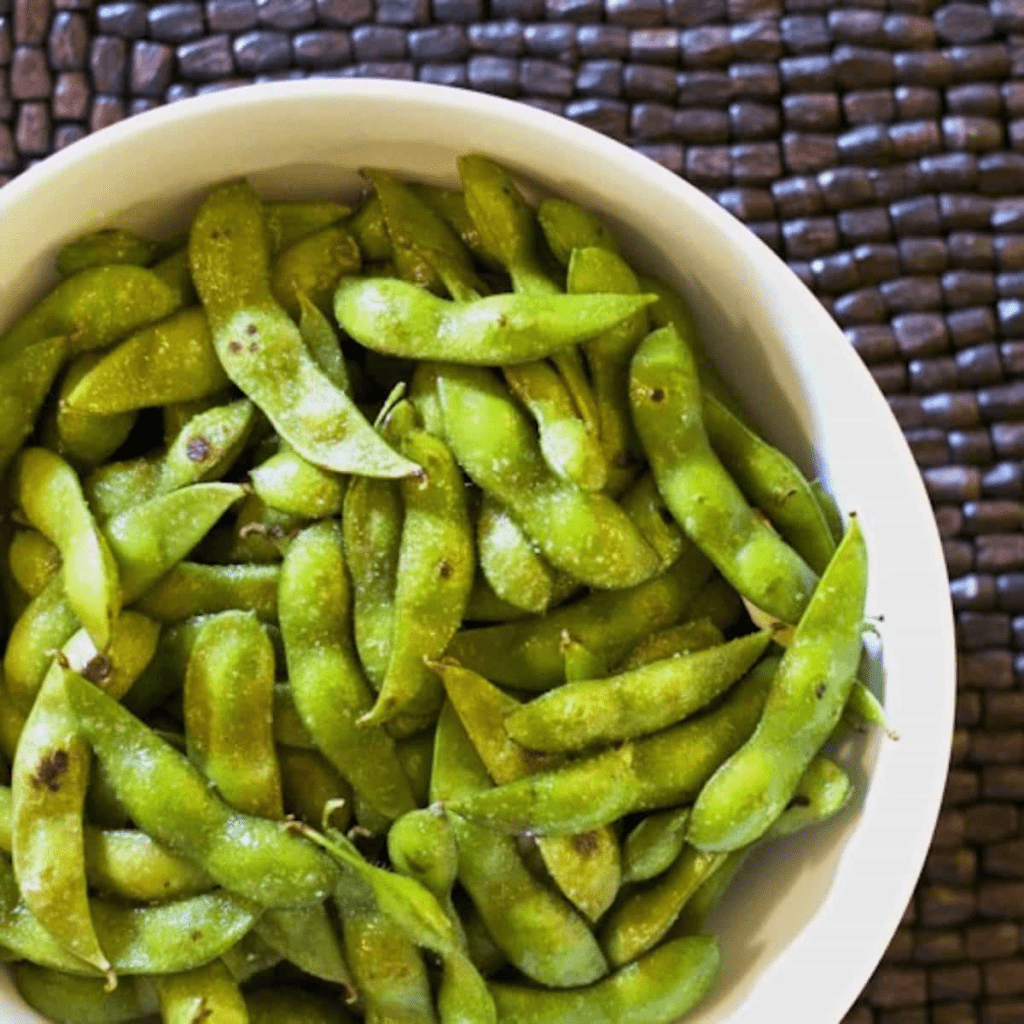
17) Roasted Pumpkin Seeds
Pumpkin seeds are a nutritious and fiber-rich snack that can aid in constipation relief. I find them particularly effective due to their high magnesium content, which helps relax the intestinal muscles and promote regular bowel movements.
These seeds are also packed with insoluble fiber, which adds bulk to stool and helps it move through the digestive tract more easily.
I recommend eating a small handful of raw, unsalted pumpkin seeds as a snack or sprinkling them on salads and yogurt.
For added flavor, I sometimes lightly toast the seeds with a pinch of sea salt. Pumpkin seeds are versatile and can be incorporated into baked goods or trail mixes for a crunchy, fiber-boosting addition.
I’ve found that regular consumption of pumpkin seeds can contribute to improved digestive health and regularity.

18) Raspberries
Raspberries are a delicious and nutritious snack that can help relieve constipation. I find them to be an excellent source of dietary fiber, with one cup containing about 8 grams.
This high fiber content makes them particularly effective for promoting regular bowel movements.
Raspberries are also rich in antioxidants and vitamin C, which support overall digestive health. Their natural sweetness makes them a satisfying alternative to processed snacks, while their low calorie count keeps them waistline-friendly.
You can enjoy them fresh, add them to yogurt or oatmeal, or blend them into smoothies. Their versatility makes them a convenient choice for increasing fiber intake throughout the day.
For those dealing with constipation, I recommend consuming a handful of raspberries as a snack or including them in meals regularly.
The combination of fiber, water content, and natural sugars in raspberries can help soften stool and stimulate bowel movements.
19) Black Bean Dip
Black bean dip is a nutritious and fiber-packed snack that can help alleviate constipation. I find it’s an excellent choice for those looking to increase their fiber intake while enjoying a tasty treat.
This dip is easy to make at home. I typically blend cooked black beans with garlic, lime juice, and spices for a flavorful spread.
One serving of black bean dip contains about 5 grams of fiber, which is a significant boost to your daily intake.
I love pairing black bean dip with whole grain crackers or raw vegetables for an extra fiber kick. This combination not only aids digestion but also provides a satisfying and filling snack.
The protein content in black beans makes this dip a great option for maintaining steady energy levels throughout the day. I’ve found it’s particularly good for curbing afternoon cravings.
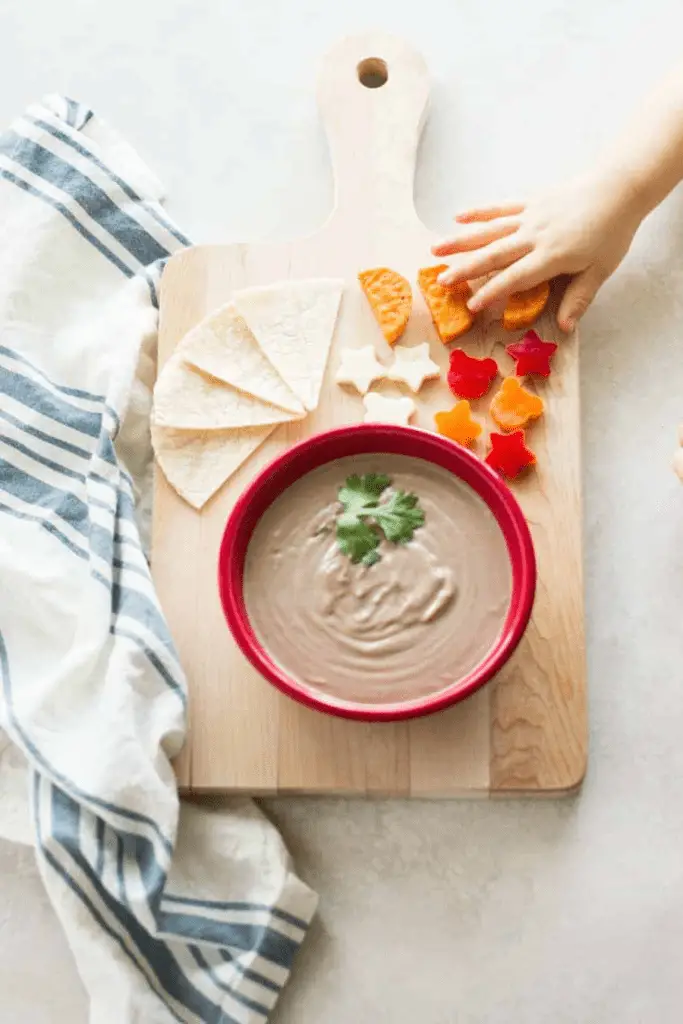
20) Broccoli Florets
Broccoli florets are an excellent high-fiber snack for relieving constipation. I find them packed with both soluble and insoluble fiber, which work together to promote healthy digestion.
Raw broccoli florets offer a satisfying crunch and can be enjoyed on their own or paired with a low-fat dip. I like to keep a container of washed and cut florets in my fridge for easy snacking.
For those who prefer cooked broccoli, steaming is a great option. It softens the texture while preserving most of the fiber content. I often prepare a batch to have on hand for quick, fiber-rich snacks throughout the week.
Broccoli also provides additional health benefits. It’s rich in vitamins C and K, as well as antioxidants that support overall well-being.
I recommend gradually increasing broccoli intake to allow your digestive system to adjust to the added fiber.
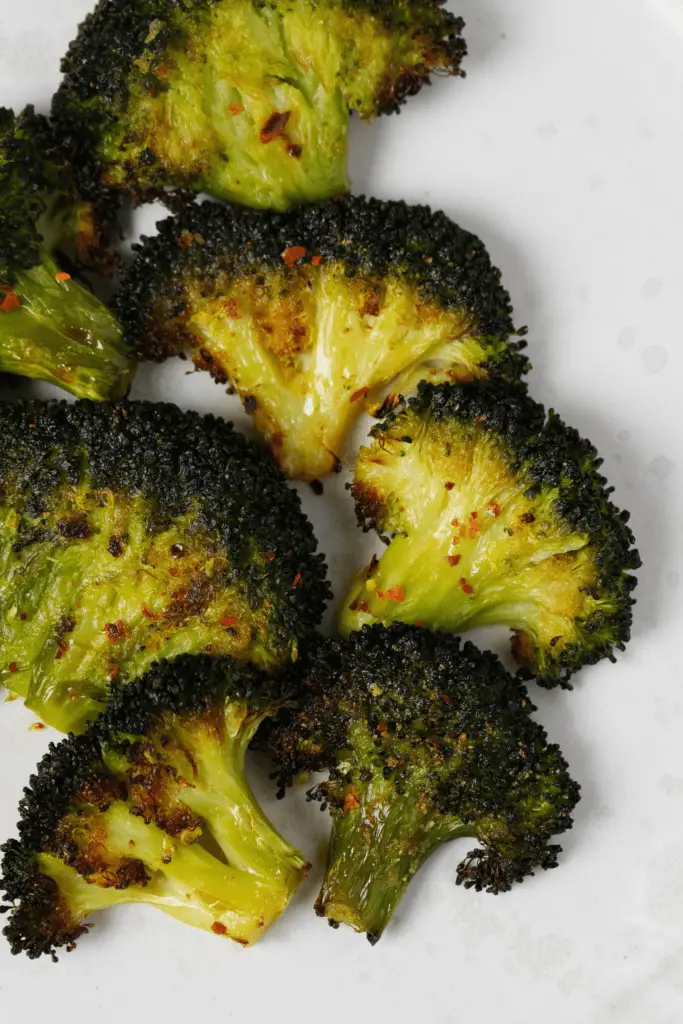
21) Split Pea Soup
Split pea soup is a fantastic high-fiber snack that is incredibly satisfying and nutritious.
Split peas are the star ingredient, offering an impressive amount of fiber per serving. I like to add other fiber-rich vegetables like carrots and celery to boost the nutritional value even further.
The warm, comforting nature of split pea soup makes it perfect for sipping as a snack. I often make a big batch and portion it into smaller containers for easy reheating throughout the week.
To keep things interesting, I sometimes add different herbs and spices. A touch of cumin or smoked paprika can really elevate the flavor profile.
For extra protein, I occasionally toss in some diced ham or crispy bacon bits.
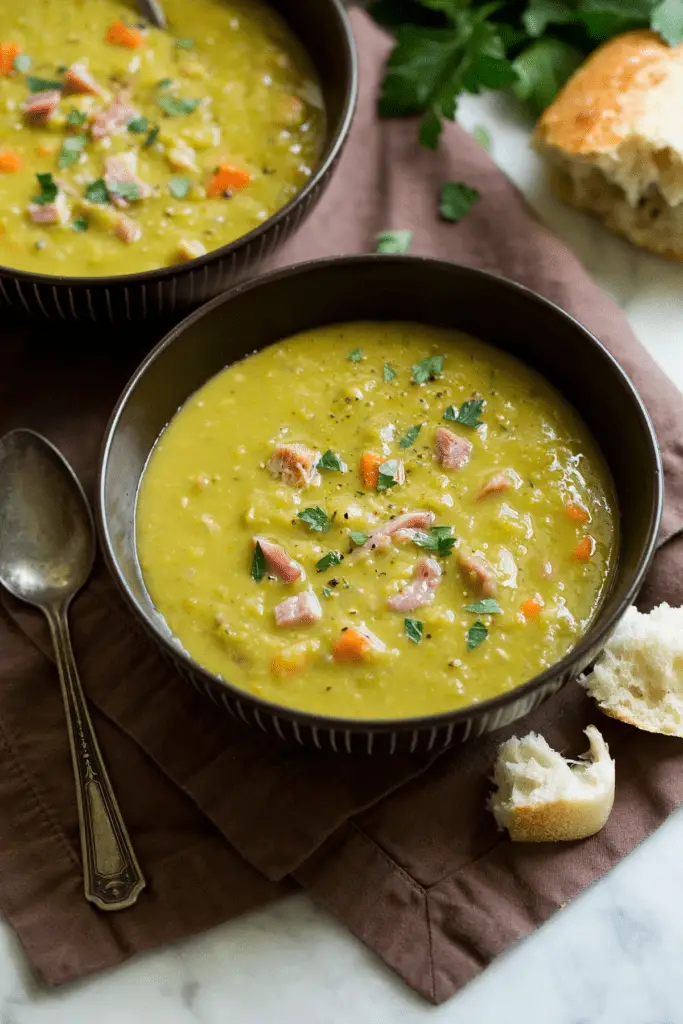
22) Trail Mix with Nuts and Dried Fruits
Nuts like almonds, walnuts, and pecans are excellent sources of fiber and healthy fats. They provide a satisfying crunch and can help promote regular bowel movements.
For dried fruits, I suggest adding raisins, dried apricots, and dried figs. These are particularly high in fiber and natural sugars, which can help stimulate the digestive system.
To boost the fiber content even further, I like to include some seeds in my trail mix. Pumpkin seeds and sunflower seeds are great options that add both nutrients and texture.
When making trail mix at home, I prefer using raw or lightly toasted nuts and unsweetened dried fruits. This helps avoid added sugars and preservatives often found in store-bought varieties.
Remember to consume trail mix in moderation, as it is calorie-dense. A small handful can provide a good amount of fiber and energy without overindulging.
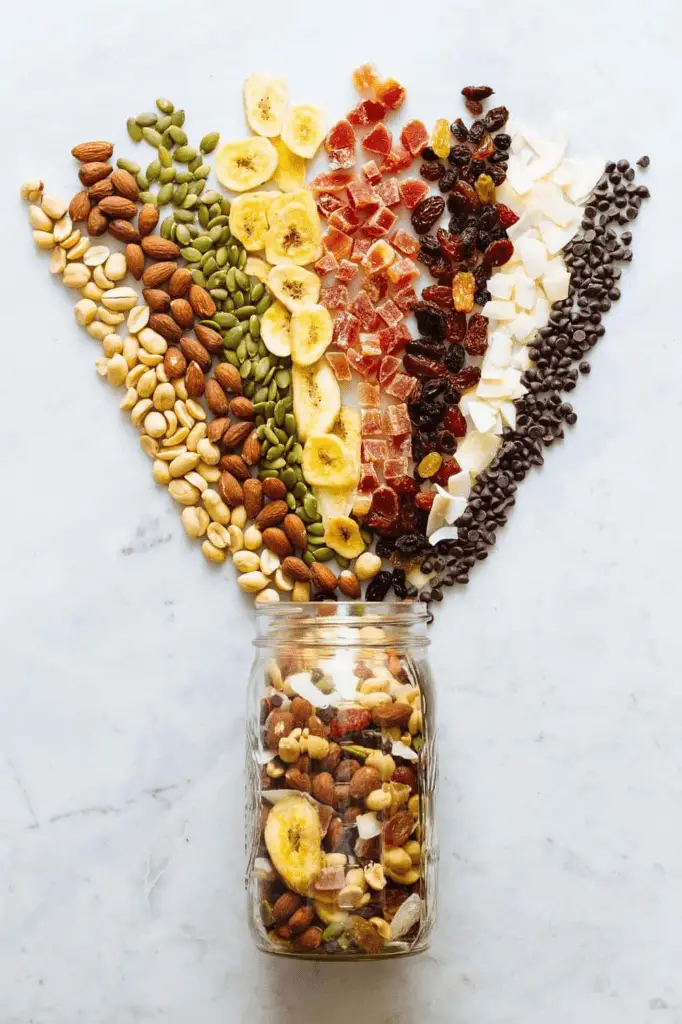
23) Roasted Chickpeas
Roasted chickpeas are a fantastic high-fiber snack that can help with constipation relief. I love how crunchy and satisfying they are while packing a nutritional punch.
A quarter-cup serving of roasted chickpeas provides about 5 grams of fiber, which is 18% of the daily recommended intake. This makes them an excellent choice for promoting digestive health.
The high fiber content in chickpeas helps add bulk to stool and promotes regular bowel movements. They’re also rich in protein and various vitamins and minerals.
Experiment with different flavors when making roasted chickpeas. Some of my favorite seasonings include garlic powder, smoked paprika, and cumin.
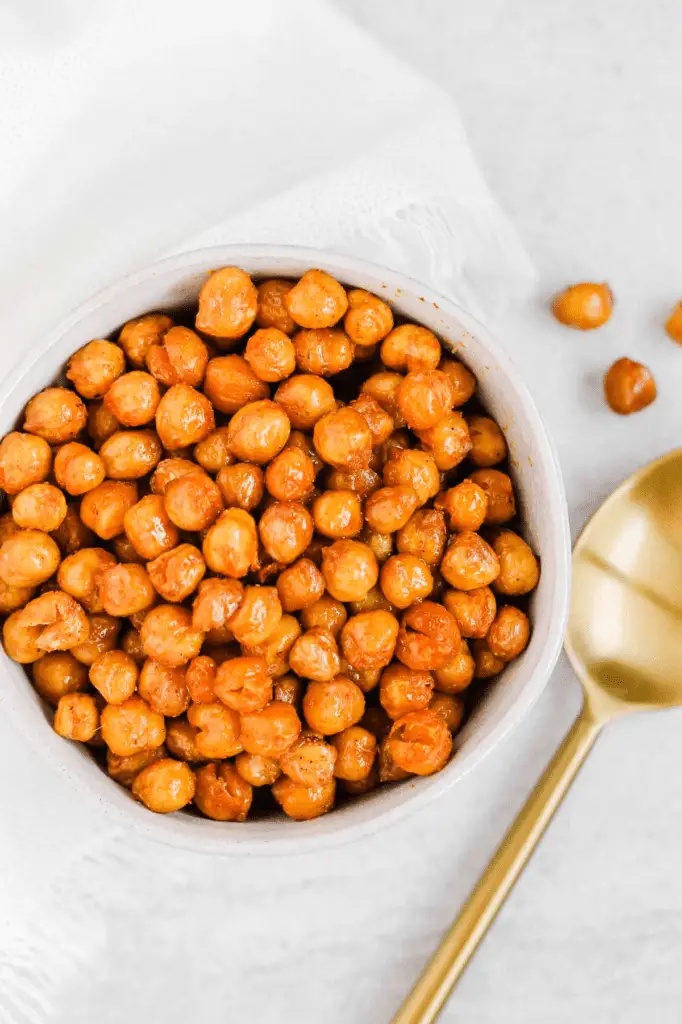
Types of Dietary Fiber
Dietary fiber comes in two main forms, each with distinct characteristics and benefits for digestive health. Let’s explore the key differences between soluble and insoluble fiber.
Soluble Fiber
Soluble fiber dissolves in water, forming a gel-like substance in the digestive tract. I find this type particularly beneficial for managing cholesterol levels and regulating blood sugar. Foods rich in soluble fiber include:
- Oats and barley
- Legumes (beans, lentils, peas)
- Fruits like apples, citrus, and berries
- Some vegetables, such as carrots and Brussels sprouts
This fiber type slows digestion, promoting a feeling of fullness. It also feeds beneficial gut bacteria, supporting a healthy microbiome.
Insoluble Fiber
Insoluble fiber doesn’t dissolve in water. Instead, it adds bulk to stool and helps food pass more quickly through the digestive system. I recommend including insoluble fiber-rich foods to prevent constipation and maintain regular bowel movements. Good sources include:
- Whole grains (wheat bran, brown rice)
- Nuts and seeds
- Vegetables like cauliflower and green beans
- Fruit skins
This type of fiber acts like a natural laxative, speeding up the passage of food through the intestines. It’s especially helpful for those struggling with constipation or irregular bowel movements.
How to Incorporate High Fiber Snacks Into Your Diet
I recommend gradually increasing fiber intake and pairing high-fiber foods with other nutrients for optimal digestion and satisfaction. These strategies can help make fiber-rich snacks a regular part of a healthy diet.
Tips for Adding Fiber Gradually
I suggest starting with small amounts of fiber and increasing slowly over time. This helps prevent digestive discomfort. I recommend adding just 2-3 grams of fiber per day each week.
Drinking plenty of water is crucial when boosting fiber intake. I aim for at least 8 glasses daily to help fiber move through the digestive system.
I like to keep a food diary to track fiber intake. This helps ensure I’m meeting my goals without overdoing it. Smartphone apps make logging quick and easy.
Spreading fiber intake throughout the day, rather than all at once, can also improve tolerance. I incorporate high-fiber snacks between meals.
Combining Fiber with Other Nutrients
Pairing fiber-rich foods with protein and healthy fats enhances satiety and nutrient absorption. I enjoy apple slices with almond butter or whole grain crackers with hummus.
Adding fiber to existing favorite snacks is another strategy I use. Sprinkling chia seeds on yogurt or mixing ground flaxseed into smoothies boosts fiber content.
I make energy bites by combining oats, nut butter, and dried fruit. These provide fiber along with protein and healthy fats for sustained energy.
I am a writer, editor, and publisher of Grillcuisines.com – an online blog dedicated to sharing grilling tips, accessories, and recipes to encourage more people to get outside and grill.
I’m off to find out the different types of grill foods, their seasons, and how to conduct outdoor cooking properly. I’ll also show you some of my grill-worthy cooking tools & accessories!







